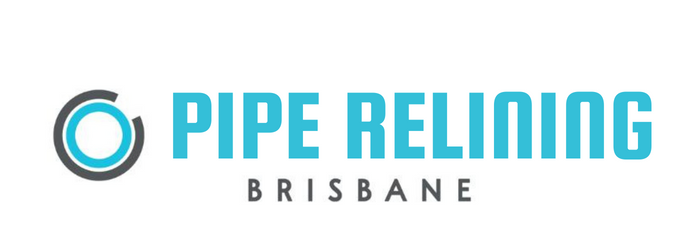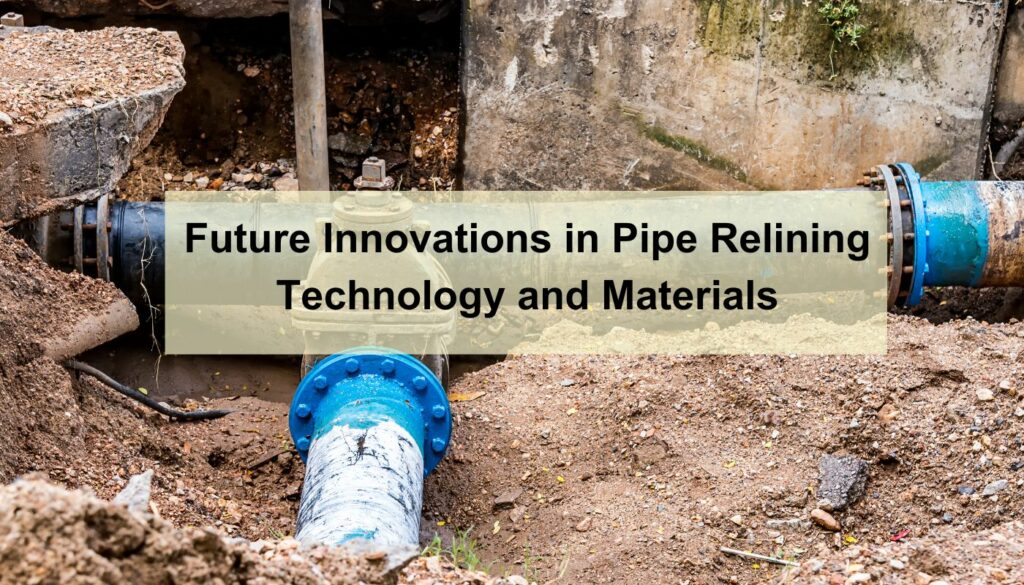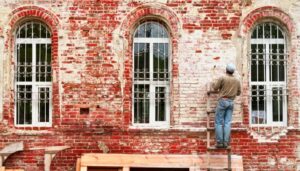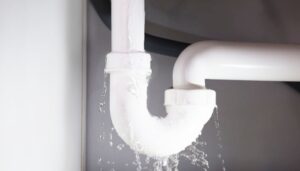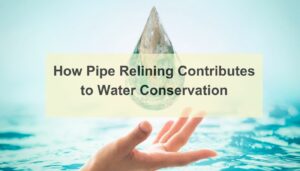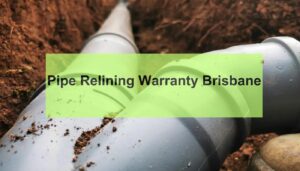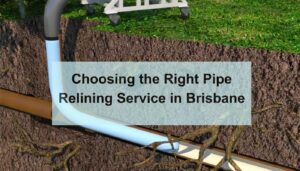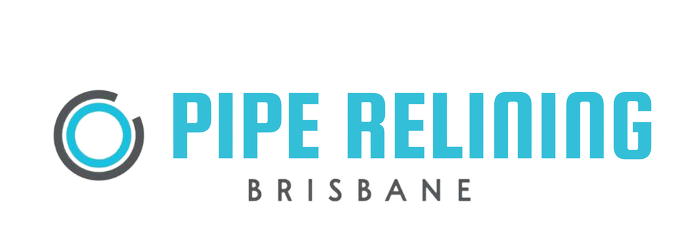Pipe relining technology represents a critical component in the maintenance and rehabilitation of aging water, sewer, and drainage systems worldwide. Unlike traditional pipe repair methods that require extensive excavation, pipe relining provides a less intrusive, more cost-effective solution for repairing damaged or deteriorated pipes. This technology allows for the repair of pipes by creating a “pipe within a pipe,” significantly extending the life of existing pipe systems without the need for extensive and disruptive excavation work associated with traditional excavation methods.
The evolution of pipe relining techniques has been marked by significant advancements since its inception. Initially, repairs were often performed by replacing entire sections of pipe, a process that was not only time-consuming but also environmentally and financially taxing. The development of pipe relining repair methods, starting with simple patching techniques and evolving into sophisticated Cured-in-Place Pipe (CIPP) and other methods, has revolutionized infrastructure maintenance. Today, pipe relining is favored for its efficiency, cost-effectiveness, and minimal environmental impact, addressing the urgent need for sustainable infrastructure solutions and offering a modern alternative to traditional plumbing services.
However, as the demand for more durable, environmentally friendly, and efficient solutions grows, the industry faces several challenges. These include the need for advanced materials that can withstand harsher conditions, techniques that can be applied more broadly, and solutions that minimize environmental impact. The introduction of pipe relining has also significantly changed the landscape for plumbing services, offering a non-invasive alternative to traditional excavation methods that can often cause significant disruption and inconvenience.
The following sections will explore how the industry is responding to these challenges through innovations in technology and materials, setting the stage for a future where infrastructure maintenance is more sustainable, efficient, and effective. This shift not only represents an evolution in the way we approach the repair and maintenance of our essential water and sewer systems but also underscores the growing importance of adopting environmentally responsible practices in all areas of infrastructure management.
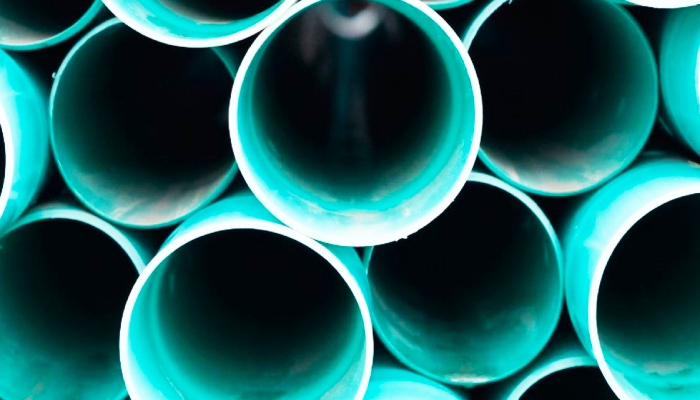
Current State of Pipe Relining Technologies and Materials
The landscape of pipe relining technologies has grown diverse, with several methods now available to address various rehabilitation needs. The most prevalent techniques include:
- Cured-in-Place Pipe (CIPP): A method where a resin-saturated felt tube is inserted into the existing pipe and then cured using heat or ultraviolet light, forming a new pipe within the old one. This method is widely used due to its versatility and the durability of the resulting liner.
- Pipe Bursting: This technique involves breaking the old pipe while simultaneously pulling a new pipe into place. It is particularly useful for upsizing the pipeline capacity without extensive excavation.
- Slip Lining: In this method, a smaller, “carrier pipe” is inserted into the larger host pipe and then grouted into place, effectively reducing the diameter but rehabilitating the pipe with minimal disruption.
Materials play a crucial role in the effectiveness of these technologies. Epoxy resins and fiberglass composites are commonly used due to their strong adherence to existing pipe materials, durability, and resistance to chemicals and wear. However, these materials are not without their limitations. Concerns have been raised regarding the environmental impact of resin-based liners, particularly their potential to leach harmful chemicals. Additionally, the cost and longevity of these materials, although improved, still present challenges for widespread adoption and long-term sustainability damaged pipe itself.
The limitations of current technologies and materials underscore the pressing need for innovation. Environmental concerns, the quest for more durable solutions, and cost-effectiveness drive the industry towards exploring new materials and techniques. The next sections will delve into emerging innovations in pipe relining technology and pipe repair technologies and materials, showcasing advancements that promise to overcome current limitations and redefine the future of infrastructure maintenance.
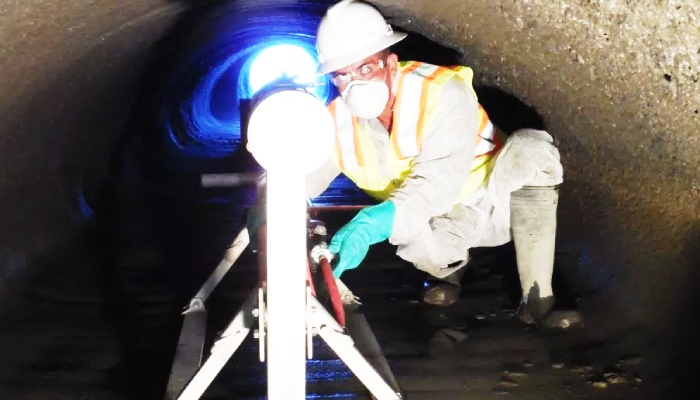
Emerging Innovations in Pipe Relining Technologies
The relentless pursuit of more efficient, durable, and environmentally friendly pipe relining solutions has led to remarkable technological innovations. These advancements aim to address the limitations of current methods, such as the need to repair underground PVC pipes without digging, and the shortcomings of traditional methods. By embracing sustainability and cost-effectiveness, these innovations offer a new horizon for sustainable plumbing solutions and a more efficient pipe repair process for damaged pipes. Key areas of innovation include:
Advanced Resin Formulations
Innovative resin formulations are being developed to enhance the performance and environmental safety of Cured-in-Place Pipe (CIPP) installations. These new resins boast faster curing times, reduced environmental impact, and greater resistance to chemicals and abrasion. Notably, some are derived from bio-based materials, offering a greener alternative to traditional epoxy and polyester resins. These advancements not only improve the sustainability of pipe relining but also extend the life expectancy of relined pipes, marking a significant step away from the invasive and environmentally disruptive traditional methods of pipe repair.
Robotics and Automation in Pipe Relining
Robotics and automation are revolutionizing pipe relining, enabling more precise and efficient repairs. Robotic systems can navigate pipes, identify defects, and apply repairs with minimal human intervention. These technologies allow for the relining of pipes in challenging locations, such as under buildings or in highly urbanized areas, where traditional excavation is impractical or too disruptive. Moreover, automation enhances safety by reducing the need for workers to enter potentially hazardous environments. This approach facilitates the repair of underground PVC pipes without the need for extensive digging, embodying the principles of sustainable plumbing solutions.
UV Curing Technology
Ultraviolet (UV) curing technology is gaining traction as a faster, more environmentally friendly alternative to traditional heat curing methods. UV light can cure resin-coated liners in a fraction of the time required for thermal curing, significantly reducing energy consumption and the carbon footprint of relining operations. Additionally, UV-cured liners tend to have superior mechanical properties, including enhanced durability and resistance to wear, further extending the lifespan of rehabilitated pipes. This technology represents a leap forward in the pipe repair process, offering an efficient solution for the restoration of damaged pipes.
Smart Pipe Systems
The integration of sensor technology into relined pipes, creating ‘smart’ pipe systems, represents a forward-looking innovation. These sensors can monitor the structural health of the pipe, detect leaks, and even predict potential failures before they occur. This real-time data collection and analysis can drastically improve maintenance strategies, allowing for preemptive repairs and reducing the risk of catastrophic failures. Smart pipe systems embody the future of infrastructure management, where data-driven decisions lead to more resilient and reliable utility services. Through these systems, the industry moves closer to a holistic and sustainable approach to managing water and sewage systems, addressing both the technical and environmental challenges of the traditional pipe repair process.
These emerging innovations in pipe relining technologies not only offer solutions to the age-old problems of pipe repair but also pave the way for a future where infrastructure maintenance is less invasive, more sustainable, and significantly more efficient. By addressing the limitations of traditional methods and focusing on the development of new materials and techniques, the industry is set to revolutionize how we maintain and rehabilitate our underground utilities.
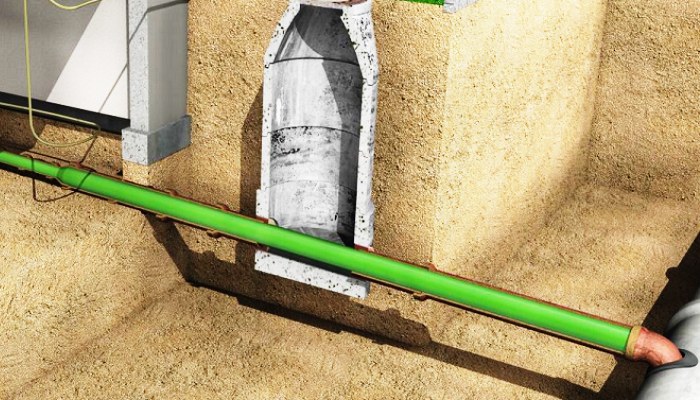
Future Materials for Pipe Relining
The evolution of materials used in pipe relining is pivotal to overcoming the current challenges of durability, environmental impact, and cost savings. Future materials aim to provide longer-lasting repairs, minimize ecological footprints, and enhance the overall efficiency of the relining process. Among the most promising developments are:
Nanocomposite Materials
Nanocomposites, made from a base material enhanced with nanoparticles, offer superior strength, flexibility, and chemical resistance compared to traditional materials. These properties make nanocomposites ideal for the pipe repair and relining, where they can significantly improve the structural integrity and lifespan of relined pipes. Furthermore, their enhanced performance could reduce the frequency of repairs, offering a more sustainable and cost-effective solution.
Bio-based and Recyclable Materials
The shift towards bio-based and recyclable materials reflects the growing emphasis on environmental sustainability in the pipe relining industry. These materials, derived from renewable resources and capable of being recycled after their service life, offer a significant reduction in the environmental impact of pipe rehabilitation projects. Innovations in this area not only contribute to the sustainability of infrastructure maintenance but also align the plumbing industry with global efforts to reduce dependence on fossil fuels and decrease carbon emissions.
Self-Healing Materials
Self-healing materials represent a groundbreaking development in pipe relining. These materials can automatically repair minor cracks and damages, significantly minimizing downtime, extending the life of relined pipes and reducing maintenance costs. The mechanism behind self-healing varies, from embedded microcapsules that release repair agents upon cracking to materials that undergo chemical transformations to seal cracks. The adoption of self-healing materials in pipe relining could revolutionize infrastructure maintenance, ensuring longer-lasting, more resilient utility networks.
Challenges and Considerations for Future Innovations
While the future of pipe relining technology and materials brims with potential, several challenges and considerations must be navigated to fully realize environmental benefits of these advancements. Addressing these concerns is crucial for the successful implementation and widespread adoption of new relining methods and materials.
Regulatory and Standards Compliance
Innovative technologies and materials must adhere to existing regulatory frameworks and industry standards, which are designed to ensure safety, reliability, and environmental protection. Developing products that comply with these regulations can be time-consuming and costly, potentially slowing down the adoption of new innovations. Furthermore, as technology evolves, so too must the regulatory landscape, requiring a delicate balance between innovation and environmental preservation and safety.
Environmental Impact and Sustainability
The drive towards more sustainable pipe relining solutions highlights the need to consider the full lifecycle impact of new materials and technologies. This includes not only the sourcing of raw materials and the manufacturing process but also the application, durability, and eventual disposal or recycling of these products. Ensuring that innovations reduce the overall environmental footprint of pipe relining is essential for their long-term viability and acceptance.
Cost and Accessibility
The cost of new technologies and materials is a significant barrier to their widespread adoption. While innovations may offer long-term savings through reduced maintenance and longer lifespans, the upfront costs can be prohibitive for many municipalities and infrastructure and property owners both. Making these technologies accessible and affordable is critical for their uptake and the overall improvement of infrastructure maintenance practices.
Training and Skill Development
The introduction of new pipe relining technologies and materials requires a workforce skilled in their application and maintenance. Ensuring that technicians and engineers are adequately trained presents a challenge, particularly in regions with a shortage of skilled labor. Investment in education and training programs is essential to build the capacity needed to deploy these innovations effectively.
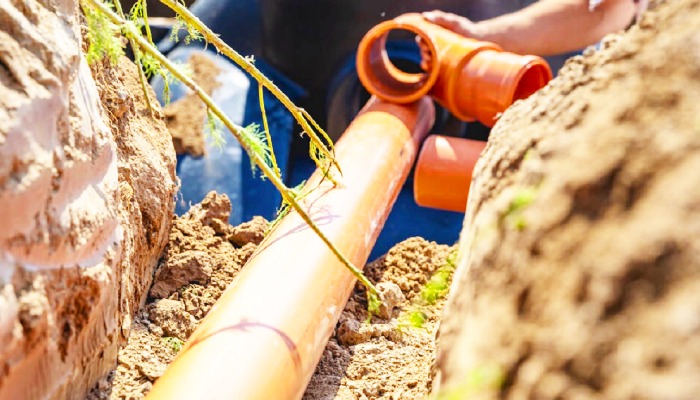
The Road Ahead for Pipe Relining Innovations
The future of pipe relining technology and materials is poised for significant transformation. As we look ahead, several key trends and focus areas emerge, promising to shape the direction of industry advancements.
Integration of Digital Technologies
Digital technologies, including artificial intelligence (AI) and machine learning, are set to play a pivotal role in advancing pipe relining methods. These technologies can optimize the design and application of relining materials, predict maintenance needs, and enhance decision-making processes. The integration of digital tools will not only improve the efficiency of relining projects but also extend the lifespan of infrastructure assets through smarter maintenance strategies.
Focus on Circular Economy Principles
The move towards materials and processes that align with the principles of the circular economy reducing waste, reusing resources, and recycling materials—is gaining momentum. This shift will drive the development of more sustainable relining materials and techniques, emphasizing durability, recyclability, and minimal environmental impact. Embracing circular economy principles can significantly reduce the ecological footprint of pipe relining projects while promoting resource efficiency.
Collaboration and Cross-Sector Partnerships
Collaboration between industry, academia, and government is crucial for driving innovation in pipe relining. Cross-sector partnerships can accelerate research and development, facilitate the sharing of knowledge and resources, and streamline the commercialization of new technologies. By working together, stakeholders can overcome technical and regulatory hurdles more effectively, paving the way for the next generation of pipe relining solutions.
Conclusion
The journey towards future innovations in pipe relining technology and materials is filled with opportunities and challenges. By addressing the considerations outlined and focusing on the road ahead, the industry can navigate towards a future where pipe relining solutions are not only more advanced and innovative approach but also more sustainable, efficient, and accessible. This progression holds the promise of transforming infrastructure maintenance, ensuring the longevity and reliability of essential services for communities around the world.
